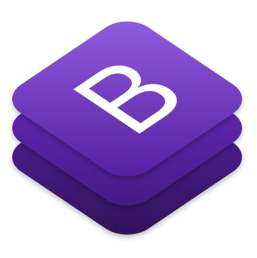| Bootstrap 4 Enters Beta |
| Written by Ian Elliot | |||
| Thursday, 17 August 2017 | |||
|
The front-end web framework Bootstrap is a highly successful open source project. After two years in alpha, the first beta of Bootstrap 4 has been released. Originally Twitter Blueprint, Bootstrap was developed at Twitter by Mark Otto and Jacob Thornton as a framework to encourage consistency across internal tools. It was renamed at the time of its first release in August 2011, when it became an open source project. Its subsequent development has attracted a large community of contributors but has been largely done by the original small group of core developers. Since version 2.0 which was released in early 2012, Bootstrap supports responsive web design, which means the layout of web pages adjusts dynamically, taking into account the characteristics of the device used (desktop, tablet, mobile phone). Responsive design has been the default since the release of version 3.0 in August 2013 when Bootstrap adopted its mobile-first design philosophy. Mark Otto first announced version 4 when Bootstrap 3.3.0 was released at the end of October 2014, saying that the first alpha would be "a couple weeks off". In fact it was August 19, 2015 - Bootstrap's 4th birthday, before it shipped. The roadmap outline then was:
In fact there have been six alpha versions, the latest of them in January 2017, but considering the scope of the changes and improvements this isn't really surprising. In the announcement of the Beta on the the Bootstrap Blog Mark Otto notes: Two years in the making, we finally have our first beta release of Bootstrap 4. In that time, we've broken all the things at least twenty-seven times over with nearly 5,000 commits, 650+ files changed, 67,000 lines added, and 82,000 lines deleted. Probably the most significant feature of version 4.0 is the adoption of Sass (syntactically awesome stylesheets) in place of Less as its style sheet language. According to Otto: Bootstrap now compiles faster than ever thanks to Libsass, and we join an increasingly large community of Sass developers. The other major change is the adoption of flexbox. In the Alpha 6 announcement, Otto writes: Flexbox is an immensely powerful layout tool, providing unparalleled flexibility (hah) and control to our grid system and core components. It comes at the cost of dropping IE9 support, but brings significant improvements to component layout, alignment, and sizing. Flexbox brings the following advantages to Bootstrap 4:
In addition a new grid tier has been added to better target mobile devices, and there is a a new component - cards: A card is a flexible and extensible content container. It includes options for headers and footers, a wide variety of content, contextual background colors, and powerful display options. Cards replace Bootstrap 3's panels, wells, and thumbnails. Similar functionality to those components is available as modifier classes for cards. Other notable changes are:
Newer CSS support with responsive typography and easier component sizing has involved moving to rem units rather than pixels, This means dropping support for IE8, IE9, Safari 8-, iOS 8-. You'll have to stick with Bootstrap 3 if you need to support older browsers. Finally, Bootstrap's documentation has been redesigned and rewritten in Markdown with the addition of some plugins to streamline examples and code snippets. There's also a new search form. More InformationAnnouncement of Bootstrap 4 Beta Download Bootstrap v4.0.0-beta Related ArticlesGitHub Octoverse Reveals The State Of Open Source
To be informed about new articles on I Programmer, sign up for our weekly newsletter, subscribe to the RSS feed and follow us on Twitter, Facebook or Linkedin.
Comments
or email your comment to: comments@i-programmer.info |
|||
| Last Updated ( Thursday, 17 August 2017 ) |


